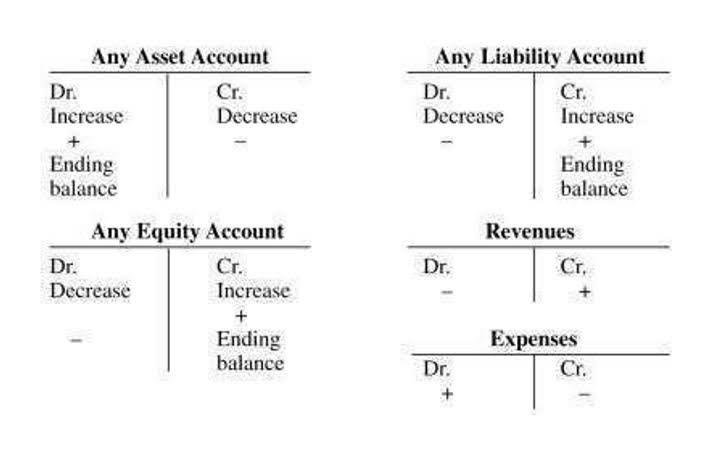
So the telephones’ NRV can be calculated as net realizable value $5,000 – $240 -$40, which is equal to $4,720. Volkswagen disclosed ownership of €43.7 billion of inventory, a very slight decline from the €43.8 billion of inventory carried at the end of December 2020. Because it is used in several different situations, net realizable values can tell analysts and accountants several important pieces of information. Charlene Rhinehart is a CPA , CFE, chair of an Illinois CPA Society committee, and has a degree in accounting and finance from DePaul University.
Challenges in Determining NRV

She holds a Masters Degree in Professional Accounting contribution margin from the University of New South Wales. Her areas of expertise include accounting system and enterprise resource planning implementations, as well as accounting business process improvement and workflow design. Jami has collaborated with clients large and small in the technology, financial, and post-secondary fields. Let’s say Star Company Inc Is selling some of its inventory to Moon and Co. To properly report the sale, Star Company is determining the net realizable value for the inventory they’re selling.
Step-by-Step Guide to Calculate NRV
- This can be a concern when calculating the current ratio, which compares current assets to current liabilities.
- This enhances transparency and reliability in financial reports, crucial for stakeholders’ trust and regulatory compliance.
- Here are a couple of practical examples to illustrate how NRV is calculated and used.
- It is used in the determination of the lower of cost or market for on-hand inventory items.
- Despite its advantages, calculating NRV can be complex and time-consuming, requiring precise estimates and regular adjustments due to market fluctuations.
- Net Realizable Value (NRV) is instrumental in assessing asset impairment, guiding businesses in evaluating whether an asset’s carrying amount exceeds its recoverable amount.
NRV provides a framework for this reassessment, ensuring impaired assets are reported at their fair value, crucial for accurate financial reporting. This topic is significant due to its implications for inventory management, accounts receivable, and asset impairment assessments. We’ll explore how NRV calculations influence various aspects of financial reporting and decision-making processes.
What Is Net Realizable Value (NRV)?

In this situation, the inventory should be reported on the balance sheet at $12,000, and the income statement should report a loss of $3,000 due to the write-down of inventory. Net realizable value (NRV) in accounting is the estimated selling price of an asset in the ordinary course of business, minus any costs to complete and sell the asset. NRV provides a conservative estimate of an asset’s value, ensuring financial statements reflect realistic asset valuations. Calculating the Net Realizable Value (NRV) is crucial for accurate financial reporting and inventory assessment. NRV, defined as the estimated selling price minus the sum of the cost of completion and any costs necessary to make the sale, can be efficiently computed using the right tools. Net Realizable Value (NRV) is a vital concept in accounting that ensures assets, particularly inventory, are valued accurately in financial statements.
What is the net realizable value for Inventory?
- By applying NRV calculations, companies can ensure their financial statements reflect a more accurate and realistic financial position.
- This concept is also important to financial accounting in reporting inventory and accounts receivable on the balance sheet.
- We have helped accounting teams from around the globe with month-end closing, reconciliations, journal entry management, intercompany accounting, and financial reporting.
- Net realizable value is a valuation method used to value assets on a balance sheet.
- NRV is important to companies because it provides a true valuation of assets.
- A positive NRV implies that your inventory will generate profits for you, whereas a negative NRV shows that the value of your goods is lower than their cost.
By incorporating NRV, businesses can maintain compliance with accounting standards, make informed decisions, and provide stakeholders with a realistic view of their financial health. Despite its advantages, calculating NRV can be complex and time-consuming, requiring precise estimates and regular adjustments due to market fluctuations. These examples show how NRV helps businesses determine the actual value they can expect from their assets, whether it’s inventory or accounts receivable. By applying NRV calculations, companies can ensure their financial statements reflect a more accurate and realistic financial position. The total production and selling costs are the expenses required to facilitate the trade.


By regularly evaluating inventory against market conditions, businesses can make informed decisions about purchasing and production schedules. This ensures inventory levels are in sync with demand and helps avoid excess stock accumulation, which can tie up capital and affect cash flow. For instance, a retailer might adjust their buying strategy based on seasonal trends, leveraging NRV assessments to enhance inventory turnover rates. NRV facilitates compliance with financial regulations and accounting standards such as the Generally Accepted Accounting Principles (GAAP) and International Financial Reporting Standards (IFRS). These frameworks mandate the use of NRV in Bookstime certain scenarios, underscoring its importance in standardizing financial reporting practices across various jurisdictions. This standardization is crucial for companies operating in multiple regions or those involved in international trade, ensuring consistency and comparability in financial statements.
